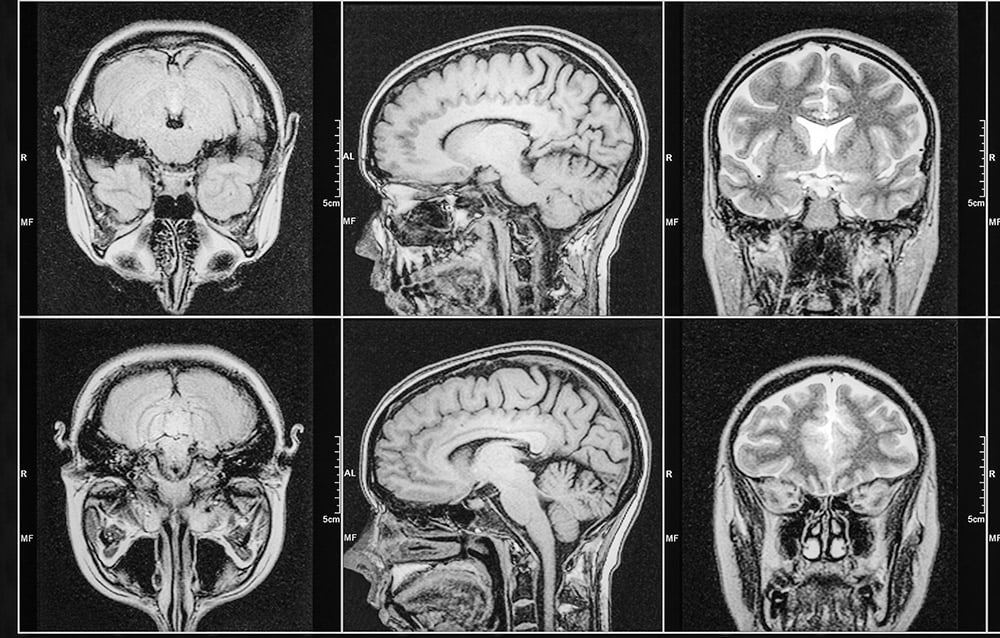Magnetic Resonance Imaging (MRI) has a reputation as a discipline that is difficult to master. The underlying physics concepts can be abstract and hard to visualize. The registry exams are tough: one out of every four people who took the ARRT® MRI exam last year did not pass.1 Enrollment in MRI education programs is declining2, yet the need for MRI Technologists is projected to grow 8% over the next decade.3
Making MRI Physics More Accessible
As we began planning Clover Learning’s new MRI curriculum, we asked ourselves: How can we make MRI more accessible to a wider range of professionals to meet this growing demand? To answer this question, we turned to a talented group of MRI educators.
 We collaborated with four exceptional MRI educators to build the new MRI courses, exam prep bank, and ARRT®-style mock exams now available on the Clover Learning platform.
We collaborated with four exceptional MRI educators to build the new MRI courses, exam prep bank, and ARRT®-style mock exams now available on the Clover Learning platform.
“MRI is a very visual modality and I have found students retain the information better that way,” says Sean Strickler, MSRS, RT(R)(MR) MRSO (MRSC™), Assistant Director of Emory University’s Medical Imaging Program. Asher Street Beam, DHA, R.T.(R)(MR), MRSO, and Program Director at the University of Mississippi Medical Center, agrees: “When teaching, it is really difficult to show some concepts without any visual animations.”
Creative Collaboration in MRI Education
As the picture of this new curriculum began to take shape, it was clear that visuals and animations would be central to bringing these challenging concepts to life. Developing these creative elements requires extensive collaboration between instructional designers, creative professionals, and subject matter experts (SME), something the Content Development Team here at Clover Learning has honed through experience.
“Animations are a powerful tool for visualizing abstract ideas, and with input from SMEs, we’re able to create lessons that truly make these concepts accessible,” says Clover Learning Motion Designer Lilith Haig, who created many of the animations and 3D models featured in the MRI curriculum.
 3D models created by Clover Learning Motion Designer Lilith Haig with input from SMEs help learners visualize the bound and free proton pools in the video lesson “Specialized Weighting: MTC”.
3D models created by Clover Learning Motion Designer Lilith Haig with input from SMEs help learners visualize the bound and free proton pools in the video lesson “Specialized Weighting: MTC”.
There is a lot of excitement right now about the potential for AI to generate images and videos for e-learning. Still, our team has found that it is collaboration between highly trained experts that yields the best results for learners. The graphics and animations in our videos are all original compositions, created by bringing together educators and creative professionals with the insights and talent to target the specific challenges learners face.
Clover Learning Graphic Designer Darren Vogt describes how collaboration between artists and SME educators yields a stronger product: “Their insights into what causes their students trouble made for a really good resource in paring down extraneous elements in the designs and focusing on what was important.”
“Their feedback helps me keep in mind the mindset of students when designing and makes me more aware of when I should use more visualizations.
— Abigail Rodriguez-Colon, Graphic Designer at Clover Learning
Instructional Designer Jessica Marquardt highlighted how the educators’ classroom experience contributed to the development of metaphors that helped students create mental models of abstract concepts. Recalling how SME Asher Street Beam explained the concept of spoiled gradient, Jessica said, “I think my favorite metaphor she shared was this: ‘You're watching Netflix and your friend walks in and interrupts, so now you're paying attention to your friend’. She said, ‘I don't know how you'd use that, but you could. And I said, ‘Can we use that metaphor? Because I know we can make it happen!’"
 Instructional Designer Jessica Marquardt and Graphic Designer Darren Vogt collaborated with SME Asher Street Beam to bring to life a metaphor she uses to explain spoiled gradients to her students.
Instructional Designer Jessica Marquardt and Graphic Designer Darren Vogt collaborated with SME Asher Street Beam to bring to life a metaphor she uses to explain spoiled gradients to her students.
The appreciation goes both ways. Dr. Cheryl DuBose, Chair of Medical Imaging and Radiation Sciences at the University of Arkansas, said of her experience building the MRI curriculum with the Clover Learning team, "Seeing the final videos is very rewarding and has reinforced my appreciation for truly creative people.” Street Beam agrees, highlighting how the experience helped improve her own teaching: “It was really good to interact with professionals who knew nothing about the content. That part helped me understand how to reach students better as well.”
A Simplified and Engaging MRI Learning Resource
We set out to build an MRI curriculum that would open up the field of MRI to a broader range of students. Instructional Designer Jessica Marquardt summarized the team’s excitement at embarking on this challenging project: “We're helping simplify courses for folks who might otherwise not be comfortable approaching the healthcare field, and I think that's really exciting.”
By bringing together the talents of instructional designers, graphic artists, animators, educators and practitioners, we’ve created a suite of video lessons and registry exam prep materials that blend the best in learning and design principles to address what’s been missing in MRI education: simple, relatable, and visual explanations that bring abstract MRI concepts to life.
“The impact will be huge in the MRI community,” predicts Stricker. “Traditionally, MRI knowledge was passed down from tech to tech, but that is not always a reliable source. Now, everyone has access to high-quality didactic training to supplement the knowledge they are learning in the clinical setting!” Motion Designer Lilith Haig, “I hope the new video lessons and questions will offer MRI students a deeper, more intuitive grasp of complex topics."
 This visual analogy helps students build a mental model of the abstract concept of k-space where MRI data are stored as the scan is performed.
This visual analogy helps students build a mental model of the abstract concept of k-space where MRI data are stored as the scan is performed.
Lauren DeNicola, Curriculum Specialist at Clover Learning and lead instructional designer for the new MRI curriculum, described her hope for how this curriculum will benefit not just students but educators as well: “Hopefully it will provide a much-needed resource for educators. Any time we can take something off their plates, we should.”
Street Beam also highlights the benefits of these new resources for licensed MRI Technologists. “Knowing the ins and outs really helps us raise the level of our profession. Depth of knowledge helps technologists gain the respect of other members of the healthcare team.” All eight of the new MRI courses can be used by MRI Technologists to earn Category A CEs toward their biennial credential renewal.
So, from everyone here on the Clover Learning team, we hope that you enjoy the MRI video lessons and exam prep resources as much as we enjoyed making them. We would love to hear what you think - drop us a line at support@cloverlearning.com with your thoughts or questions!
References
- ARRT® Annual Exam Report 2023
- ASRT® Enrollment Snapshot 2023
- Bureau of Labor Statistics Occupational Outlook Handbook: Radiologic and MRI Technologists





